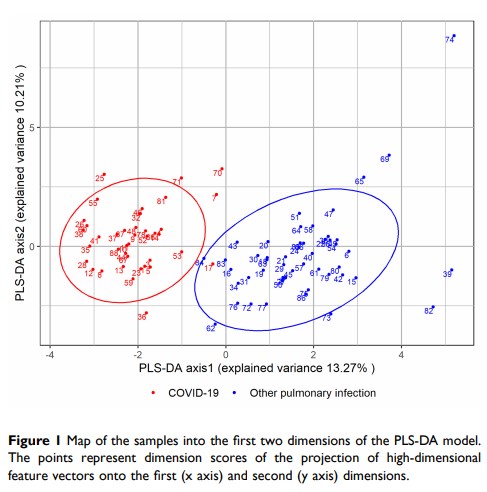100417
论文已发表
注册即可获取德孚的最新动态
IF 收录期刊
- 3.3 Breast Cancer (Dove Med Press)
- 3.4 Clin Epidemiol
- 2.5 Cancer Manag Res
- 2.9 Infect Drug Resist
- 3.5 Clin Interv Aging
- 4.7 Drug Des Dev Ther
- 2.7 Int J Chronic Obstr
- 6.6 Int J Nanomed
- 2.5 Int J Women's Health
- 2.5 Neuropsych Dis Treat
- 2.7 OncoTargets Ther
- 2.0 Patient Prefer Adher
- 2.3 Ther Clin Risk Manag
- 2.5 J Pain Res
- 2.8 Diabet Metab Synd Ob
- 2.8 Psychol Res Behav Ma
- 3.0 Nat Sci Sleep
- 1.8 Pharmgenomics Pers Med
- 2.7 Risk Manag Healthc Policy
- 4.2 J Inflamm Res
- 2.1 Int J Gen Med
- 4.2 J Hepatocell Carcinoma
- 3.7 J Asthma Allergy
- 1.9 Clin Cosmet Investig Dermatol
- 2.7 J Multidiscip Healthc

COVID-19 患者与其他肺部感染患者之间生物标志物的差异
Authors Dai J, Du Y, Gao J, Zhao J, Wang L, Huang Y, Xia J, Luo Y, Li S, McNeil EB
Received 12 April 2020
Accepted for publication 9 July 2020
Published 28 July 2020 Volume 2020:13 Pages 2609—2615
DOI https://doi.org/10.2147/IDR.S257936
Checked for plagiarism Yes
Review by Single anonymous peer review
Peer reviewer comments 3
Editor who approved publication: Professor Suresh Antony
Background: The pandemic due to the novel coronavirus disease 2019 (COVID-19) has resulted in an increasing number of patients need to be tested. We aimed to determine if the use of integrated laboratory data can discriminate COVID-19 patients from other pulmonary infection patients.
Methods: This retrospective cohort study was conducted at Kunming Third People’s Hospital in China from January 20 to February 28, 2020. Medical records and laboratory data were extracted and combined for COVID-19 and other pulmonary infection patients on admission. A partial least square discriminant analysis (PLS-DA) model was constructed and calibrated to discriminate COVID-19 from other pulmonary infection patients.
Results: COVID-19 patients diagnosed and treated in Kunming were balanced in terms of sex and covered all age groups. Most of them were mild cases; only five were severe cases. The first two dimensions of the PLS-DA model could classify COVID-19 and other pulmonary infection patients with an accuracy of 96.6% (95.1% in the cross-validation model). Basophil count, the proportion of basophils, prothrombin time, prothrombin time activity, and international normalized ratio were the five most discriminant biomarkers.
Conclusion: Integration of biomarkers can discriminate COVID-19 patients from other pulmonary infections on admission to hospital and thus may be a supplement to nucleic acid tests.
Keywords: COVID-19, biomarker, pneumonia, partial least square discriminant analysis
